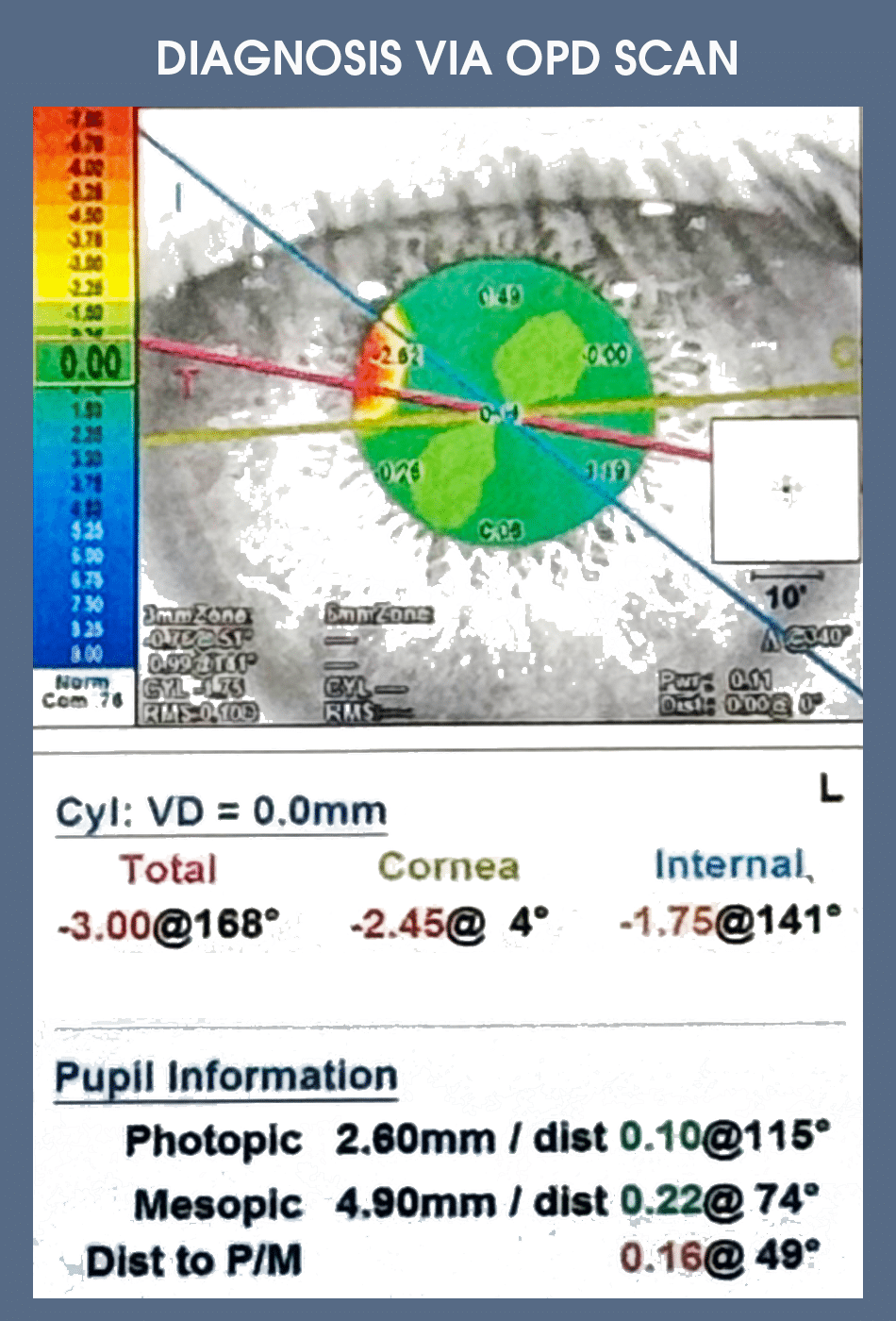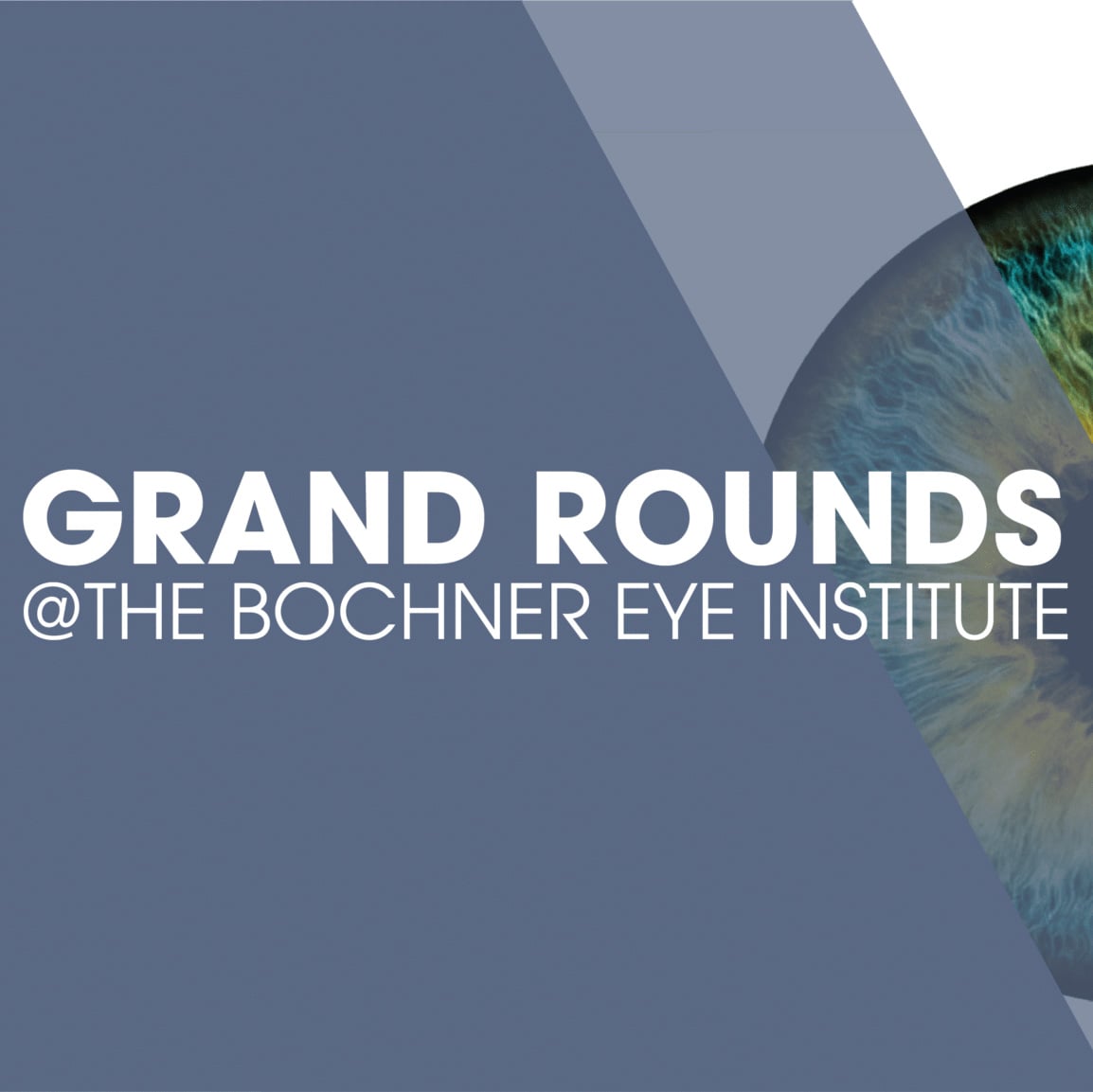
CASE #1: HOCKEY STICK TRAUMA
Patient: 46-year-old male with high myopia and astigmatism
Pre-op Refraction:
- Right Eye: -6.25 -3.75 × 106 (20/25)
- Left Eye: -6.75 -3.00 × 73 (20/25)
Procedure: Bilateral toric ICL implantation (2010)
Post-op Outcome: 20/20 uncorrected visual acuity in both eyes, which is better than preop uncorrected vision. This is not uncommon with ICL surgery, which corrects refractive errors closer to the nodal point of the eye.
TRAUMA EVENT:
- Sustained blunt trauma to the left eye from a hockey stick while playing ball hockey with his children
- Post-trauma Refraction (Left Eye): +0.50 -2.25 × 50 (20/20 with correction)
- Diagnosed with ICL rotation

SURGICAL CORRECTION:
- ICL successfully rotated back to original orientation under topical anesthesia
- Post-Correction Outcome: 20/25 uncorrected, corrected 20/20
- Long-Term Stability: Excellent vision maintained 13 years later
CASE #2: KICKBOXING TRAUMA
Patient: 25-year-old male with high myopia and regular corneal topography
Pre-op Refraction:
- Right Eye: -10.50 -2.00 × 030 (20/20)
- Left Eye: -11.50 -2.25 × 135 (20/20)
Procedure: Bilateral toric ICL implantation
Post-op Outcome: 20/20 uncorrected visual acuity in both eyes
TRAUMA EVENT:
- Head impact during kickboxing, 6 months post-ICL surgery.
- Left Eye Uncorrected VA: Dropped to 20/150
- Corrected VA: 20/20 with 2D of cylinder
- No signs of inflammation, hyphema, retinal, or optic nerve damage


- Corneal Astigmatism: Steep axis at 94°, flat axis at 4°
- ICL Orientation: Steep axis at 51°, flat axis at 141°
- Misalignment: 47° off-axis
- Required Correction: 47° clockwise rotation to realign ICL
SURGICAL CORRECTION:
- ICL repositioned successfully
- Outcome: 20/20 uncorrected visual acuity maintained at 1-year follow-up
KEY LEARNING POINTS:
1. ICL Stability:
- When properly sized, ICLs are highly stable within the ciliary sulcus
- Significant trauma may still cause rotation or subluxation
2. Trauma Management:
- Rotational misalignment from trauma is typically reversible with surgical repositioning
- Long-term visual outcomes remain excellent if addressed promptly
3. ICL vs. Refractive Lens Exchange:
- ICLs are preferred in high myopia without lenticular changes
- Lower risk of retinal detachment compared to refractive lens exchange
4. Importance of Eye Protection:
- Patients engaging in contact sports should wear protective eyewear
- Preventative education is crucial for maintaining surgical success

FINAL THOUGHTS:
Toric ICLs provide safe, stable, and effective long-term vision correction for high myopia with astigmatism. However, trauma can compromise results—making patient education and protective strategies essential for preserving visual outcomes.


